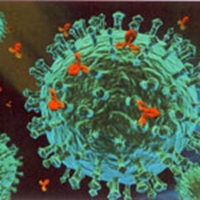Protein A or Protein G Chromatography
Immunoglobulin G from most species consists of several subclasses with different biological properties. Four subclasses of IgG have been identified in human (IgG1, IgG2, IgG3, and IgG4) and in mouse (IgG1, IgG2a, IgG2b and IgG3). For immunological studies, it is often necessary to isolate one particular subclass of IgG from the other subclasses.
Protein G binds to all major Ig classes except IgM and therefore has a wider reactivity profile than Protein A. However, the binding of Igs to Protein G is often stronger, requiring more stringent elution conditions for complete recovery of the immunoglobulin compared to Protein A.
Protein A Chromatography
Protein A can withstand more harsh conditions which can be beneficial for deep cleaning and regeneration. Different mouse IgG subclasses will exhibit varying strength of association to Protein A. Customization of the purification strategy may be required for the affinity separation, e.g. mouse IgG1, the most common subclass used, does not bind well to Protein A at low ionic strength. However, the use of high salt concentrations (2-3 M NaCl) and high pH (pH 8-9), these antibodies will bind to Protein A and provide good separation.
The needs of the researcher dictate that the speed of sample processing, the cost and the reproducibility are key criteria for selecting purification tools. Amintra purification resins have been designed to offer the optimal solution to each criterion. In the vast majority of cases, simply selecting the correct resin and performing a considered purification strategy will provide the best possible separation of your target proteins.
Protein A is a cell wall protein from Staphylococcus aureus with a molecular weight between 35-50 kDa. The quality of the Protein A agarose (or equivalent) is important to avoid leakage of Protein A during the elution procedure. Immobilized Protein A resins linked via an amide bond between the amino groups of Protein A and either oxirane or N-hydroxysuccinimide ester groups form the most stable cross-links. Immobilized Protein A binds specifically to the Fc region of immunoglobulin molecules of many mammalian species.
Protein A affinity chromatography is a rapid one-step purification, which removes most non-IgG contaminants and can achieve purities close to homogeneity. It is particularly useful for purifications of tissue culture supernatant, where 10-100 fold concentrations can be achieved.
Loose Resin
Protein A resin is formulated in 0.01% Thimerosal and, as supplied, is stable for up to 2 years at 2-8C from the date of manufacture. All resins are susceptible to oxidative agents and high temperatures should be avoided. Amintra Protein A resin is resistant to short term exposure to organic solvents (e.g. 70% ethanol, 5.8M acetic acid) and is stable in all aqueous buffers commonly used for Protein A chromatography. Protein A is resistant to 6M guanidine-HCl, 8M urea and 2M sodium isothiocyanate.
Specification
| Protein A |
Recombinant Protein A expressed in E. coli deficient in albumin binding domain |
| Supporting matrix: |
6% crosslinked agarose resin |
| Ligand Density: |
3.5 mg Protein A/ml resin |
| Bead size range: |
60-165 Ѕьm |
| Recommended working pH: |
pH 2.5-10.0 |
| Typical binding capacity: |
Upto 30 mg Human IgG /ml resin |
| Maximum Flow rate |
Upto 300 cm/h |
| Maximum pressure |
0.1MPa (1 bar) |
| Chemical stability: |
High |
| Solubility in water: |
Insoluble |
| Toxin Levels |
Free of Staphyloccocus enterotoxins and hemolysins |
 IDT
IDT

